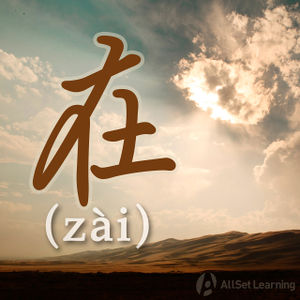Difference between revisions of "Expressing actions in progress with "zai""
| Line 23: | Line 23: | ||
* 她 <em>在</em> 看 书。<span class="trans">She is reading.</span> | * 她 <em>在</em> 看 书。<span class="trans">She is reading.</span> | ||
| + | * 我们 <em>正在</em> 吃 饭。<span class="trans">We are eating.</span> | ||
* 我 <em>在</em> 喝 啤酒。<span class="trans">I am drinking beer.</span> | * 我 <em>在</em> 喝 啤酒。<span class="trans">I am drinking beer.</span> | ||
| − | * 他 现在 <em>在</em> | + | * 他 现在 <em>在</em> 开会,没 有 时间 见 你。<span class="trans">He is currently in a meeting, he doesn't have time to see you.</span> |
* 我 <em>在</em> 上网。<span class="trans">I am surfing on the Internet.</span> | * 我 <em>在</em> 上网。<span class="trans">I am surfing on the Internet.</span> | ||
* 我 现在 <em>在</em> 上班。<span class="trans">I am currently at work.</span> | * 我 现在 <em>在</em> 上班。<span class="trans">I am currently at work.</span> | ||
| − | * 我们 <em>正在</em> 上课,请 你 等 | + | * 我们 <em>正在</em> 上课,请 你 等 一会儿。<span class="trans">We are in class, please wait a bit.</span> |
| − | + | * 我 妈妈 <em>正在</em> 做 饭。<span class="trans">My mom is preparing a meal.</span> | |
| − | * 我 | + | * 十 点 的时候,她 <em>正在</em> 看 电影。<span class="trans">When it was ten o'clock, she was watching a movie.</span> |
| − | * | + | * 你 给 我 打电话 的时候,我 <em>正在</em> 跟 朋友 喝酒。<span class="trans">When he gave me a call, I was with friends drinking alcohol.</span> |
| − | * | ||
</div> | </div> | ||
| Line 52: | Line 52: | ||
{{Used for|Indicating conditions}} | {{Used for|Indicating conditions}} | ||
{{Used for|Describing actions}} | {{Used for|Describing actions}} | ||
| − | {{Basic Grammar|在|A2|(正)在 + V| | + | {{Basic Grammar|在|A2|(正)在 + V|我们 <em>正在</em> 吃饭。|grammar point|ASG846EA}} |
{{Rel char|正在}} | {{Rel char|正在}} | ||
{{Rel char|正}} | {{Rel char|正}} | ||
{{Similar|Aspect particle "zhe"}} | {{Similar|Aspect particle "zhe"}} | ||
{{Similar|Expressing actions in progress (full form)}} | {{Similar|Expressing actions in progress (full form)}} | ||
| − | {{POS| | + | {{POS|Adverbs}} |
| − | |||
Revision as of 06:53, 21 February 2014
-
Level
-
Similar to
-
Used for
-
Keywords
在 (zài) and 正在 (zhèngzài) can be used as an auxiliary verb to express that an action is ongoing or in progress. This is often the equivalent of present continuous in English. 正在 emphasizes ongoing or in progress of an action a bit more than 在。
Structure
Subject + 在 + Verb + Object
or
Subject + 正在 + Verb + Object
Examples
- 她 在 看 书。She is reading.
- 我们 正在 吃 饭。We are eating.
- 我 在 喝 啤酒。I am drinking beer.
- 他 现在 在 开会,没 有 时间 见 你。He is currently in a meeting, he doesn't have time to see you.
- 我 在 上网。I am surfing on the Internet.
- 我 现在 在 上班。I am currently at work.
- 我们 正在 上课,请 你 等 一会儿。We are in class, please wait a bit.
- 我 妈妈 正在 做 饭。My mom is preparing a meal.
- 十 点 的时候,她 正在 看 电影。When it was ten o'clock, she was watching a movie.
- 你 给 我 打电话 的时候,我 正在 跟 朋友 喝酒。When he gave me a call, I was with friends drinking alcohol.
See also
- Aspect particle "zhe"
- Expressing actions in progress (full form) (more advanced usage)
Sources and further reading
Books
- Basic Patterns of Chinese Grammar (pp. 41-2) →buy
- Chinese: An Essential Grammar, Second Edition (pp. 60-1) →buy
- Integrated Chinese: Level 1, Part 1 (3rd ed) (pp. 209-10) →buy
- New Practical Chinese Reader 2 (新实用汉语课本2) (pp. 218-9) →buy



